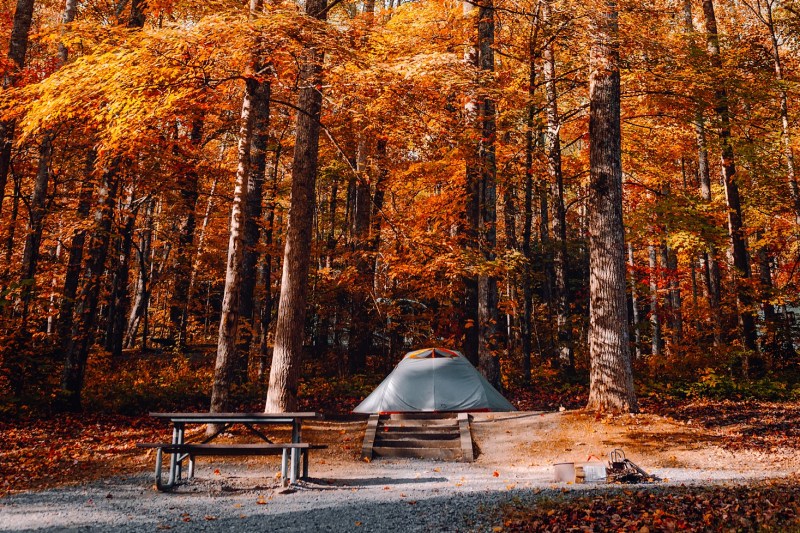
So you’ve decided you’re going camping this fall. Great. So are we. Fall is prime time for camping. The hot-and-sweaty summer days are gone, but the cold-and-miserable winter nights are still far off on the horizon.
That said, packing the same gear you used all summer for your fall excursions is a great way to have a bad time. Fall is campfire weather for a reason: Mornings and evenings get awfully chilly, and it doesn’t always warm up during the day either. That doesn’t mean you need to start revising your gear list from square one though. With these four simple adjustments to your typical loadout, you’ll be ready to enjoy all the best that the spooky season has to offer.
Related Guides
Bring the Right Socks for the Season
Whether you’re hiking or just hanging out around camp, if you aren’t breaking out the merino wool socks with the changing of the seasons, you’re doing it wrong. Wear ’em with your best hiking boots for their extra cushion and moisture-wicking properties. Wear ’em in your camp sleeping bag for warmer, dryer feet all night long. Hell, wear ’em with your outdoor hiking sandals if you want: Their natural anti-microbial properties won’t hang on to the usual funk detected in cotton or synthetic socks after a full day (or two) of use and abuse. Just make sure you pack an extra pair or two.
Darn Tough Hiker Crew Sock
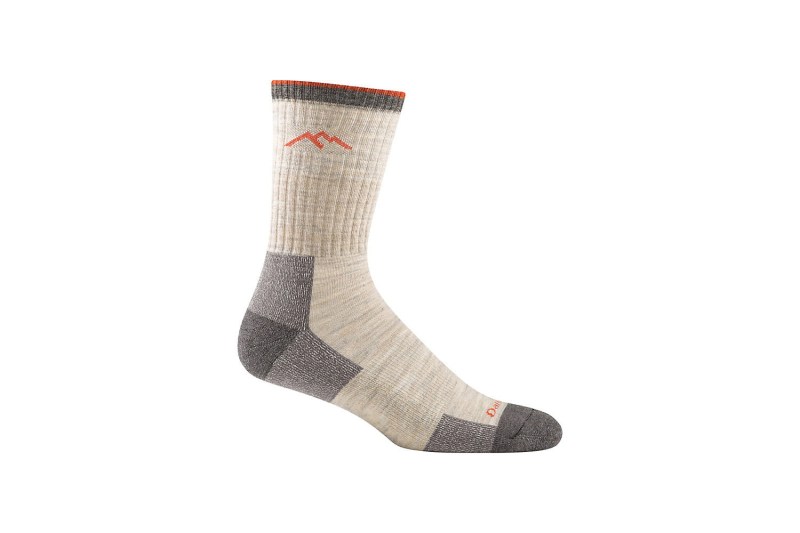
This isn’t the first time we’ve recommended a Darn Tough sock, and it won’t be the last, either. The Darn Tough Hiker is the perfect balance of cushion and warmth for all-day comfort on the trail, while still being breathable enough to keep your feet from overheating. Around camp, they’re stupid-comfortable, and that whole anti-microbial thing/anti-odor thing is a big deal when you’re sharing a confined space (like a tent) with someone else all night.
Typically we stick with the mid-length hiker for the summer/spring, but as the temps drop, we like to step it up to Darn Tough’s crew length as it works better with full-length base layers (more on those below). And before you balk at spending over $20 on a pair of hiking socks, just know that Darn Tough includes a lifetime guarantee with every pair. If you ever manage to wear a hole in one, they’ll replace it. No questions asked.
Wear Quality Base Layers For All-Day Comfort
Rocking full-length base layers in the outdoors is an absolute game-changer. Quality base layers made from merino wool or synthetic fabrics (remember, no cotton allowed outside) both wick moisture from your skin and help regulate your body temperature, keeping you warm when it’s cold out and cooling you off when you’re extra active. Depending on how low the temperatures fall in your area, you’ll either want to look into lightweight or midweight base layers.
Smartwool Intraknit 200 Merino Base Layers
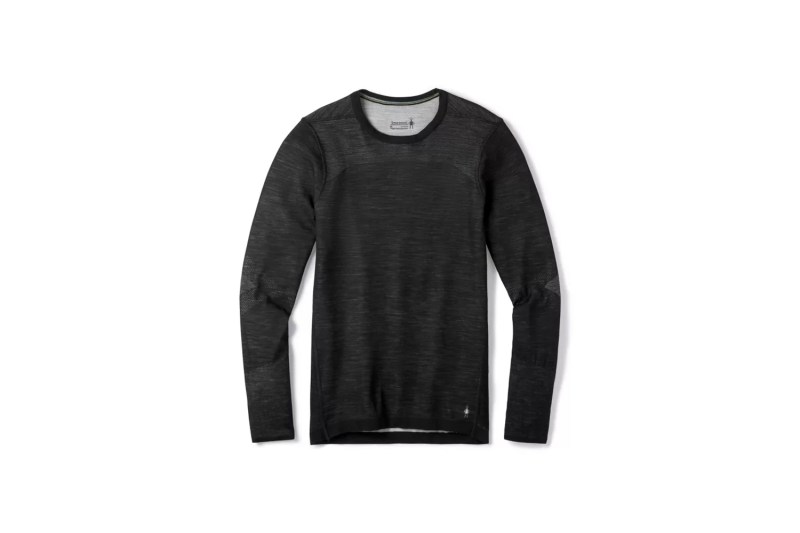
Smartwool is probably the single biggest name in merino, and we’ve put many miles on their wool garments. Their latest lineup, the “Intraknit” base layers, takes a best-of-both-worlds approach, using a 50/50 merino wool and polyester blend. Smartwool claims this makes for a longer-lasting and faster-drying base layer that still sports all the benefits of their classic 100% merino tops and bottoms. We love the 200 weight fabric, which is the perfect compromise for 99% of fall conditions.
Don’t Forget a Good Cold Weather Hat
Fall marks the start of beanie season proper. The same rules that apply to those socks and base layers also apply here: Anything is better than cotton. Most beanies for men are a mix of wool (ya know, from sheep) and acrylic, which is basically synthetic wool. You’ll also see some made from polyester, which is a little more breathable than wool or acrylic but not quite as warm.
REI Co-Op Lightweight Beanie
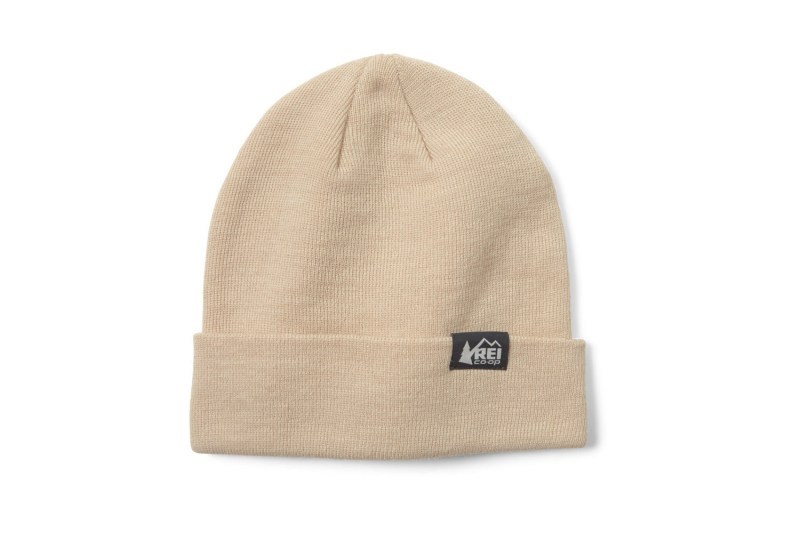
If it ain’t broke, don’t fix it. REI’s Co-Op beanie is the perfect hat for camping in the fall. With a 70% acrylic/30% wool blend, it’s warm without being too warm, but still does all the stuff we love about wool, like wicking moisture and regulating body temperature. It’s a good-looking hat that comes in a ton of colors at a tough-to-beat price. Combine that with REI Co-Op’s knack for absolutely crushing the outdoors basics, and you’re looking at a real winner.
Read more: Best Wool Beanies
Patagonia Fisherman’s Beanie
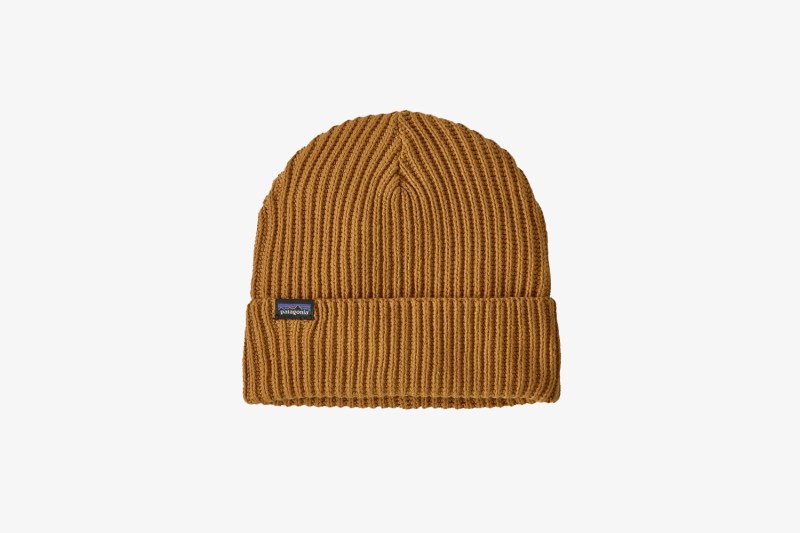
For camping in the fall in milder temperatures, we love the Patagonia Fisherman’s Beanie. Its made from polyester rather than wool or acrylic, so it provides warmth on cooler nights without getting uncomfortable during the day. Speaking of comfort, if you typically find wool or acrylic beanies to be itchy on your skin, polyester is an “itch-free” fabric, so the Fisherman’s Beanie has that going for it, too. We also like that Patagonia adds a touch of Spandex to the fabric, which makes this beanie nice and stretchy without getting stretched out over time.
The Perfect Camp Blanket
A camp blanket is one of those great pieces of gear you never knew you were missing until you brought one along. Bring it to the campfire in the evening for previously unknown degrees of coziness. When it’s time to call it a night, your camp blanket comes into the tent with you, adding extra warmth and comfort on cooler evenings. When the sun rises and it’s time to get some coffee going in that chilly morning air, throw it around your shoulders to keep your body heat where it belongs. You’ve got two choices here: A classically rugged wool blanket or the modern convenience of a packable “puffy” blanket.
Pendleton Jacquard Wool Blanket
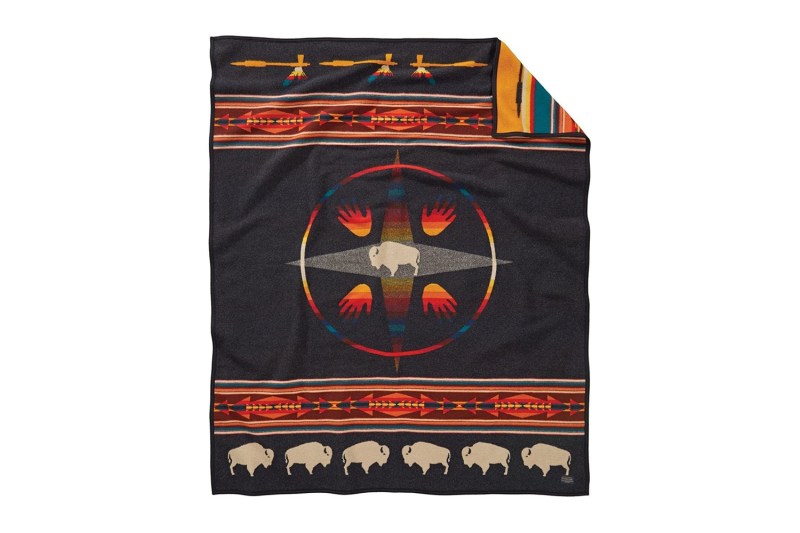
If you’re leaning toward the rustic charms of a wool blanket, no one does it better than Pendleton. Pendleton has been weaving 100% virgin wool blankets out of their Portland, Oregon mills for over 100 years. They’re often imitated, but when you’ve got an authentic Pendleton in your hands, you know you’re holding a quality blanket that’ll last for decades. We like their Jacquard series of blankets because they’re as handsome as they are rugged, and look as natural around camp as they do draped over the back of your couch. Wool also happens to be naturally fire-resistant, so you don’t have to fear the occasional flying cinder burning a hole through your investment.
Read more: Best Camping Quilts
Kelty Galactic Down Blanket
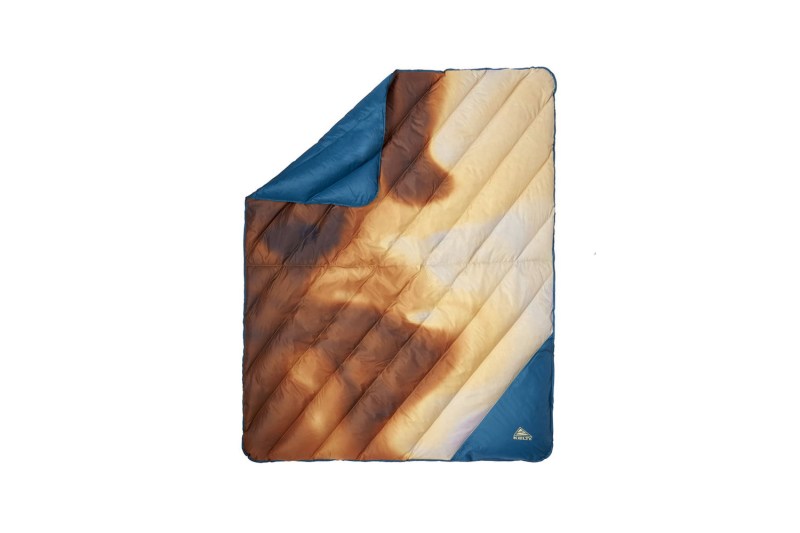
If you prefer something light and packable, a modern “puffy” blanket is pretty much a down jacket for your entire body. Our favorite right now is the Galactic Down blanket from Kelty, which uses actual 550-fill duck down in a blanket that somehow costs the same (or less) than the synthetic-filled competition. In addition to the natural warmth and compressibility of its down fill, we also give the Kelty Galactic blanket props for its 50D polyester exterior fabric. That’s about 20D above your average puffy blanket, which makes the Galactic longer lasting and more resistant to stains, tears, and punctures.



